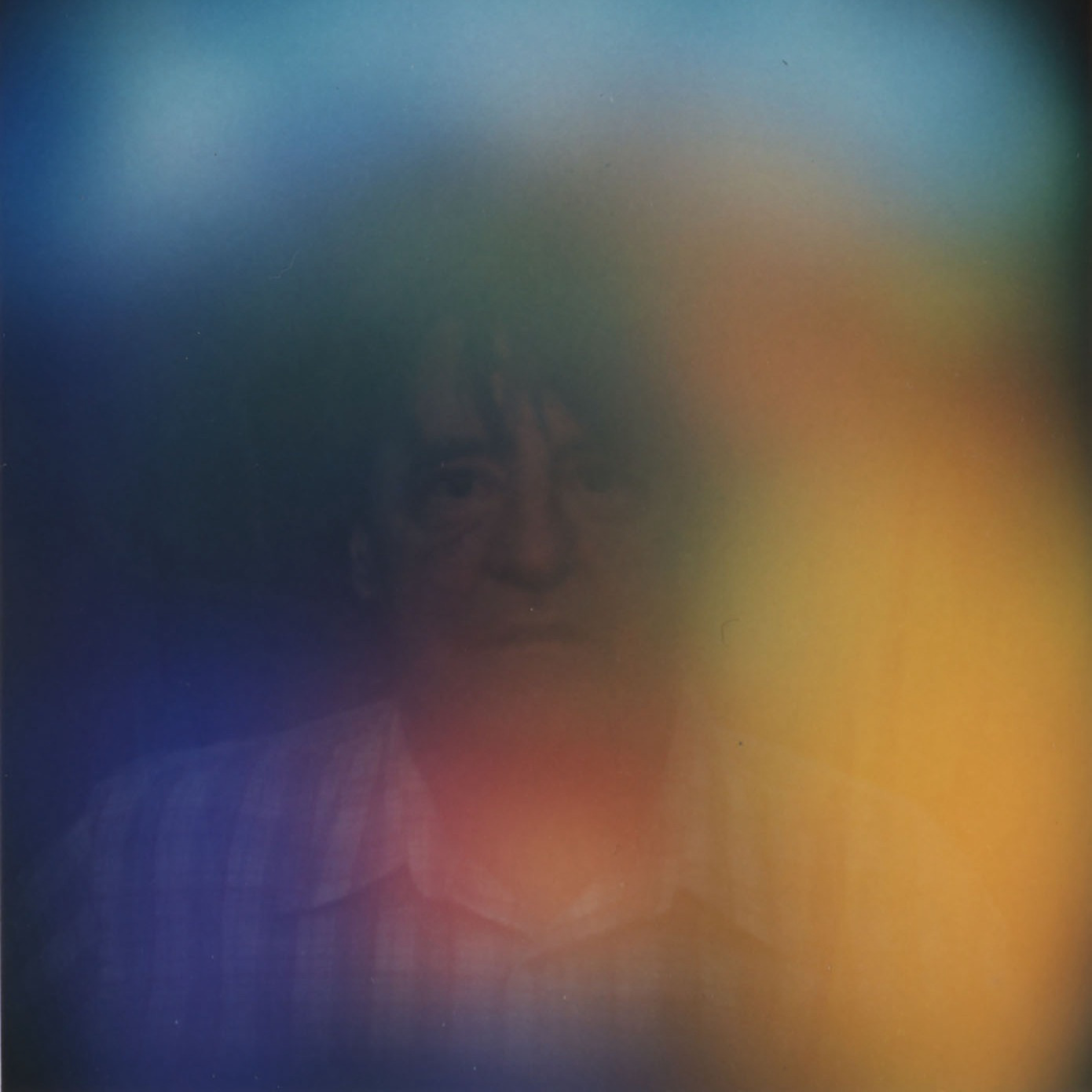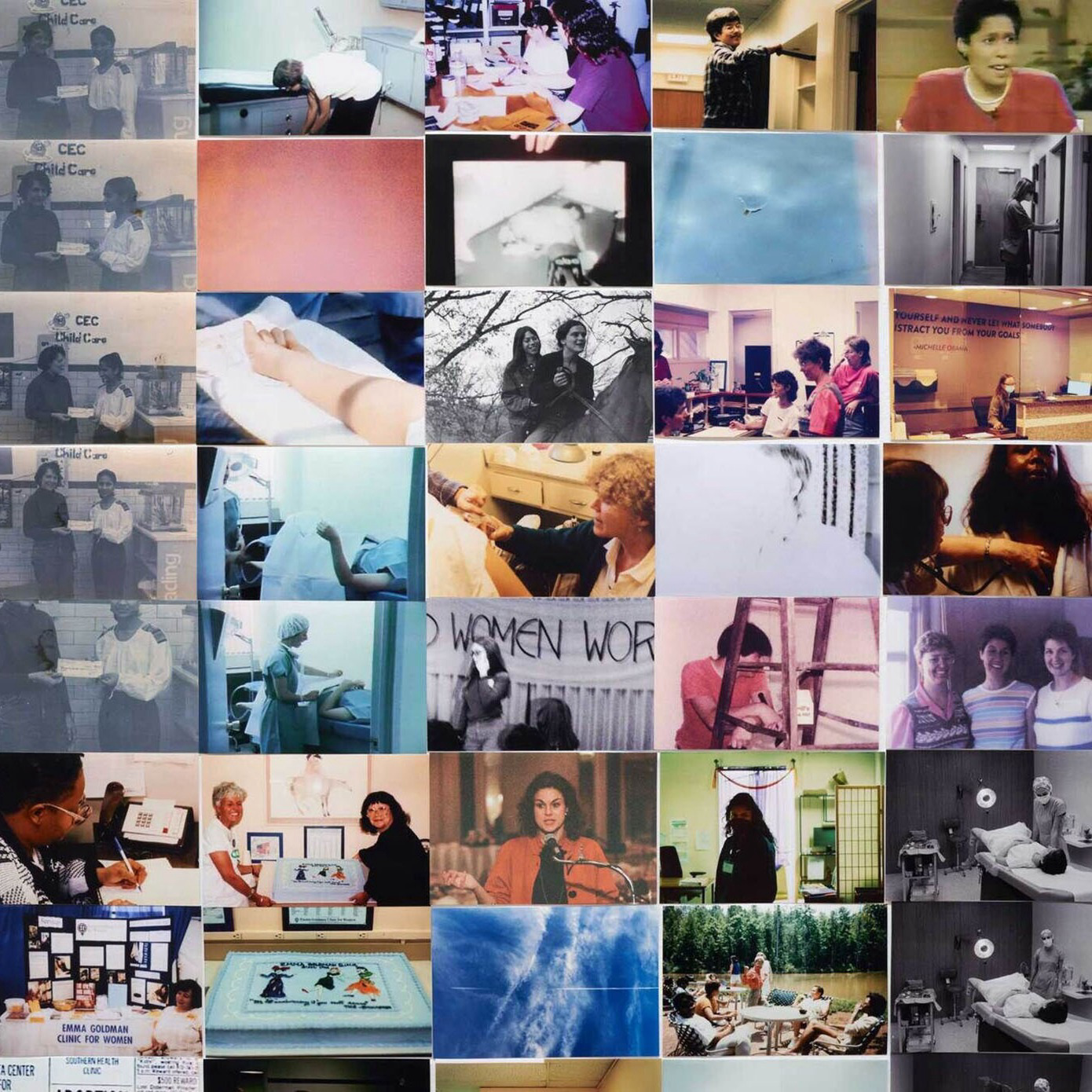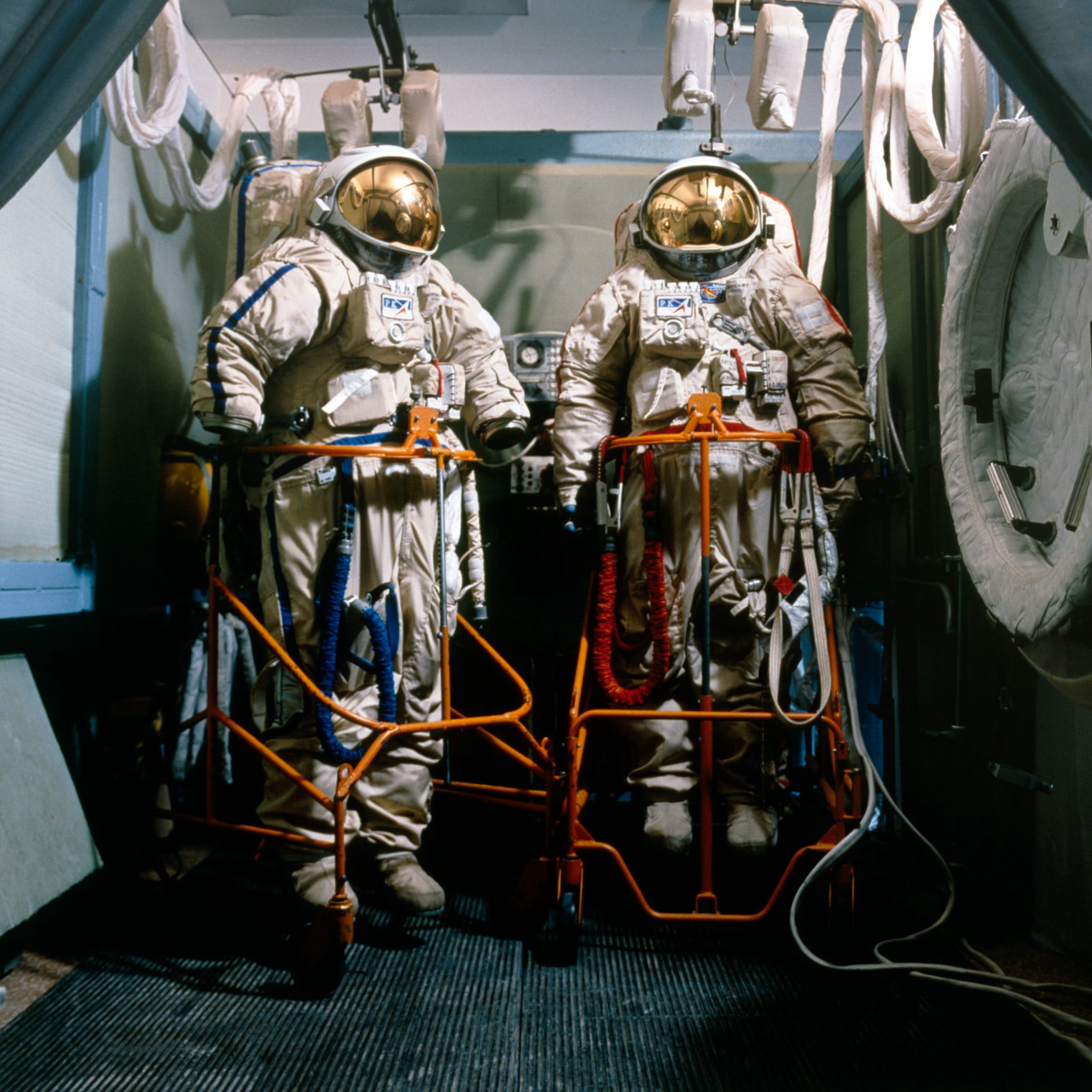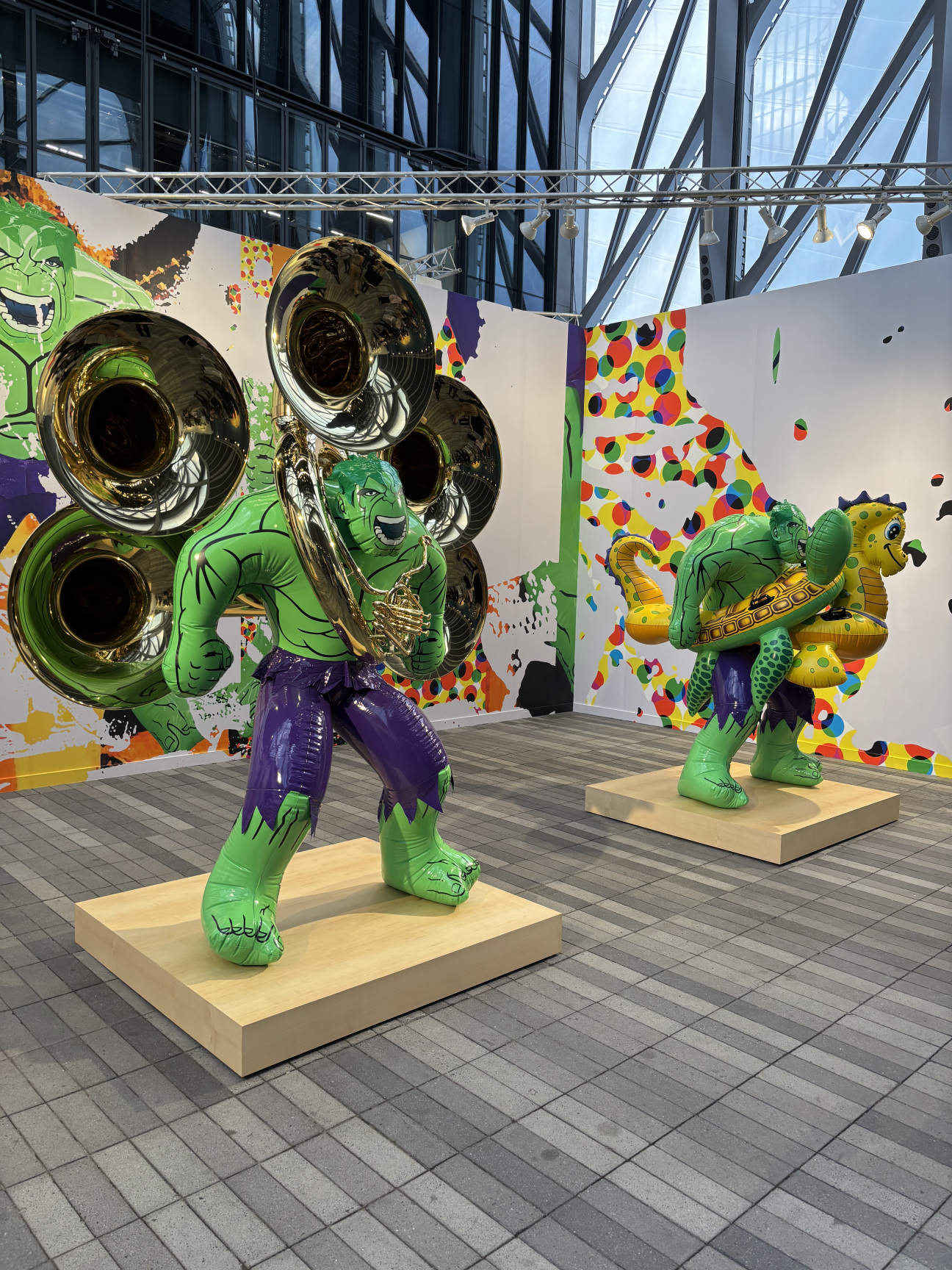
For this Big Picture column, our favorite social diarist—writer and critic Domenick Ammirati of the newsletter Spigot—chronicles the highs, lows, and psychic dissonance of a very busy week in New York. Mingling, making the rounds, and collecting autographs, he surveys the offerings at the Shed, visits the season's biggest group painting show, attends a concert, and winds up at a debauched West Village house party. (For a how it started/how it’s going side-by-side, consult Ammirati's Election Night report, which deftly presaged the art world's present unease.)
A semi-apocryphal quote by the former archbishop of Chicago, the late Cardinal George (d. 2015), goes something like this: There will never be an American pope until the U.S. is a country in decline. Well, here we are, and it’s Frieze Week. Or it was—over in a flash, like the American Century.
The exaltation of Pope Leo XIV was announced just after Frieze had opened on Wednesday. When art fairs come to town, it’s a mistake to spend too much time on the premises, so I arrived at the Shed in the late afternoon. It afforded me enough time to take in the three remarkable—notice that I did not say good—sculptures by Jeff Koons involving the Incredible Hulk at Gagosian’s booth. How many corkscrews on the roller coaster of irony are we expected to take without turning green, either with nausea or like Bruce Banner? In the booth opposite, as if to settle my stomach, James Cohan picked up a mallet and pounded a Calder-like mobile by Tuan Andrew Nguyen made of metal from recovered artillery shells. Its plates are tuned to various frequencies for sound-healing purposes, as soothing as a room-temp ginger ale.
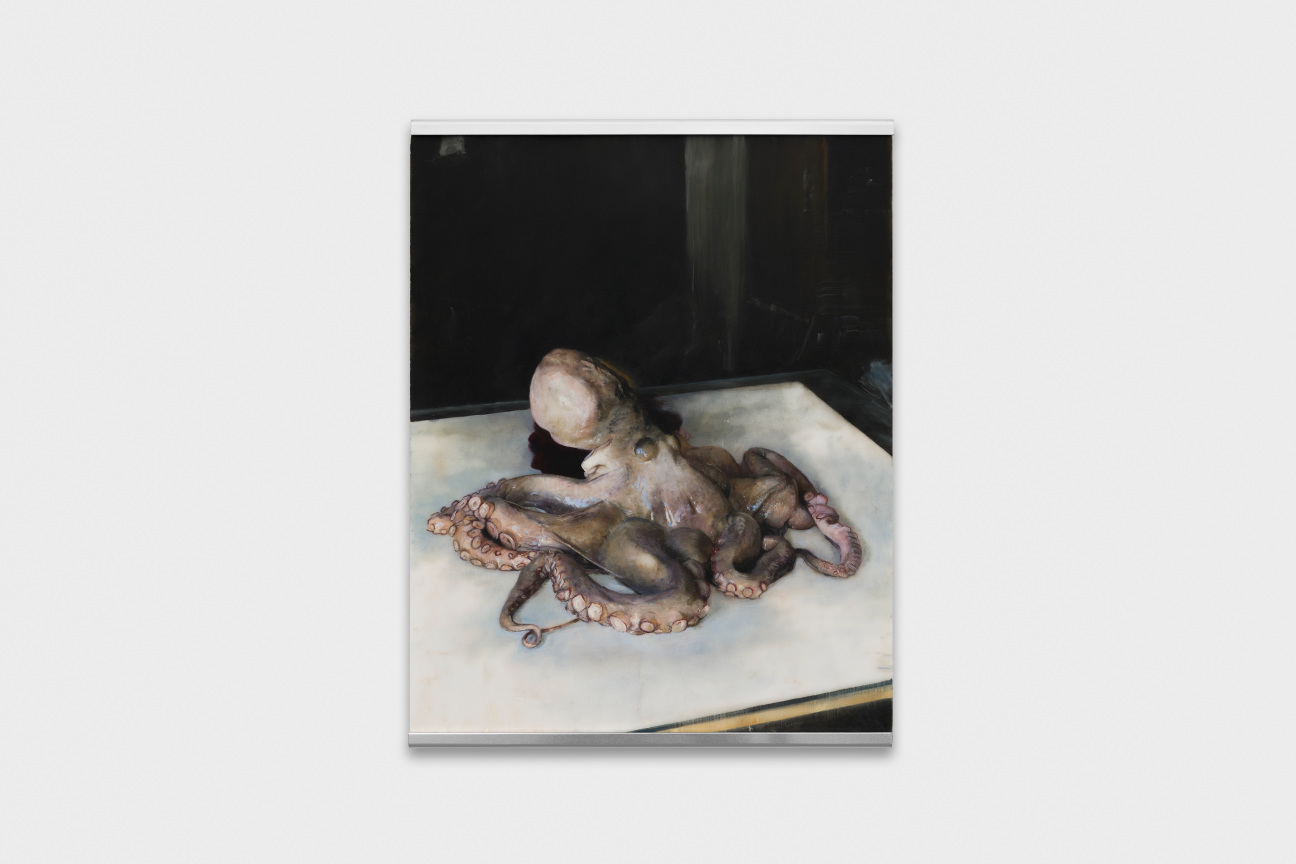
The high point of my Frieze experience was discovering the painter Karol Palczak, via his fanatically attentive painting of a rotting octopus at the booth of London’s Emalin gallery—très Chardin. Near some adorable bat paintings by Rodrigo Hernández, I ran into curator Lumi Tan, who selected the participants in Focus, the up-and-comer section of the fair. This year it included the purveyor of the bats, Lisbon’s Galeria Madragoa, plus local faves Gordon Robichaux and King’s Leap. I mentioned that the proceedings seemed a little more sedate than usual. She pointed out that no one was drinking champagne. Maybe that was the theme of the week: Despite ample amounts of literal booze, there was a general lack of intoxication.
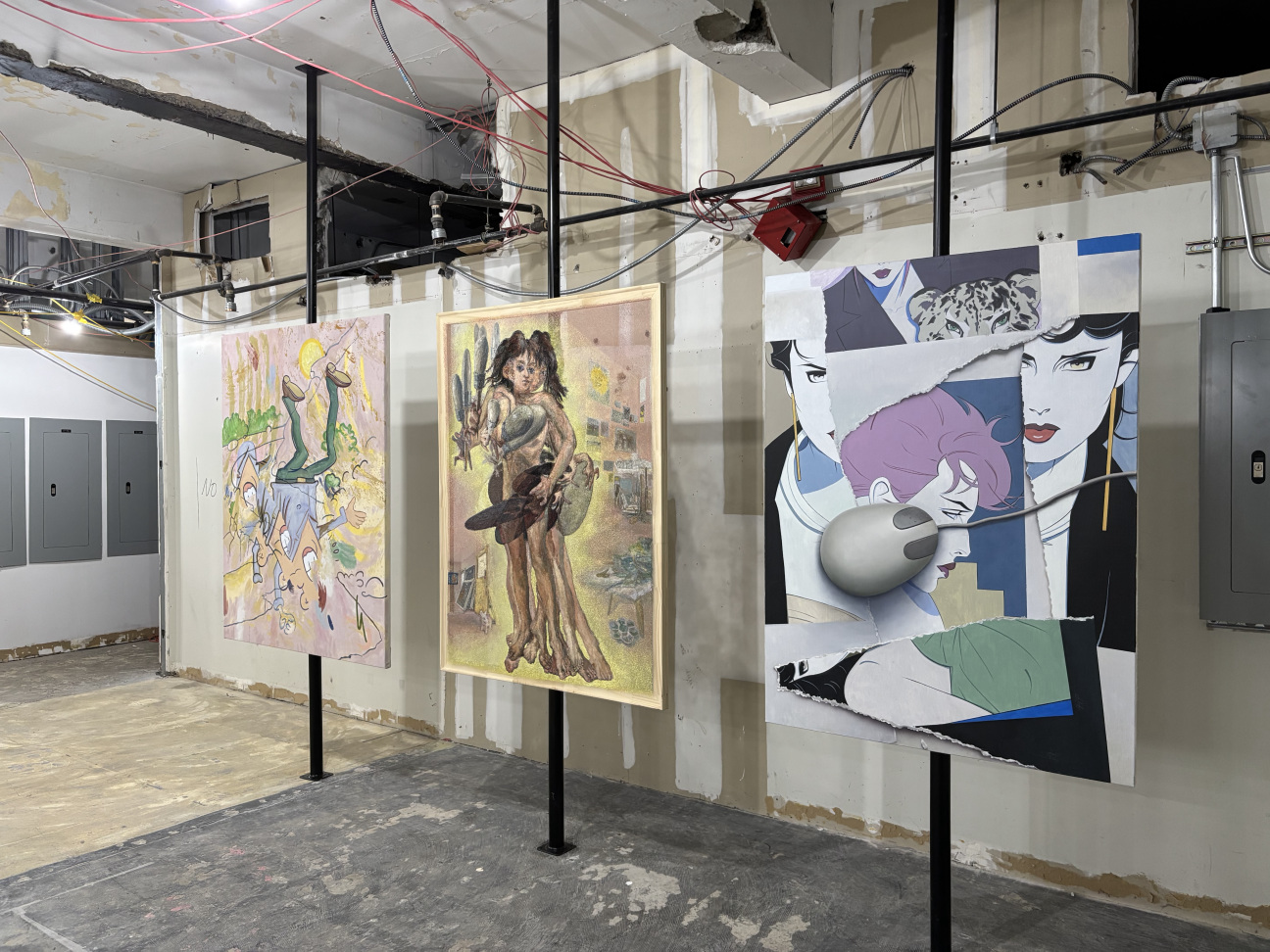
The night before, I had gone to “R U STILL PAINTING???,” an exhibition wrangling some 50 artists, heavy on Gen Xers, into 40,000 square feet of pocked and peeling office space in Midtown. It was curated by the enigmatically named collective Falcon, comprising the artists Marco Boggio Sella and Paololuca Barbieri Marchi, who aimed with the show to rekindle “the spirit and playfulness of New York’s early 2000s art scene.” While the exhibition (open through June 1) recalled a more recent occurrence, Christopher Wool’s presentation of his own work in a similar space near the World Trade Center last year, it also took me back to a party in May 2016 at the residency space run by (kaboom!) Tiffany Zabludowicz high above Times Square, where once upon a time a friend and I basked in a bay of sunset windows and chuckled innocently about the candidates in an upcoming election.
It's always fun to see an exhibition in raw office space, art running like a roughshod daydream over all our day jobs. The ambitious “R U STILL PAINTING???” leaned on this sense of the carnivalesque. More than a hundred works in bold palettes sprouted from floor-to-ceiling pole mounts and blanketed the perimeter; the frenzied sightlines created almost a hall-of-mirrors effect. The wall-less arrangement made it seem as if, absent tenants, the building’s infrastructure had sprouted pipe after pipe—and nary a word on the press release about the rhizome.
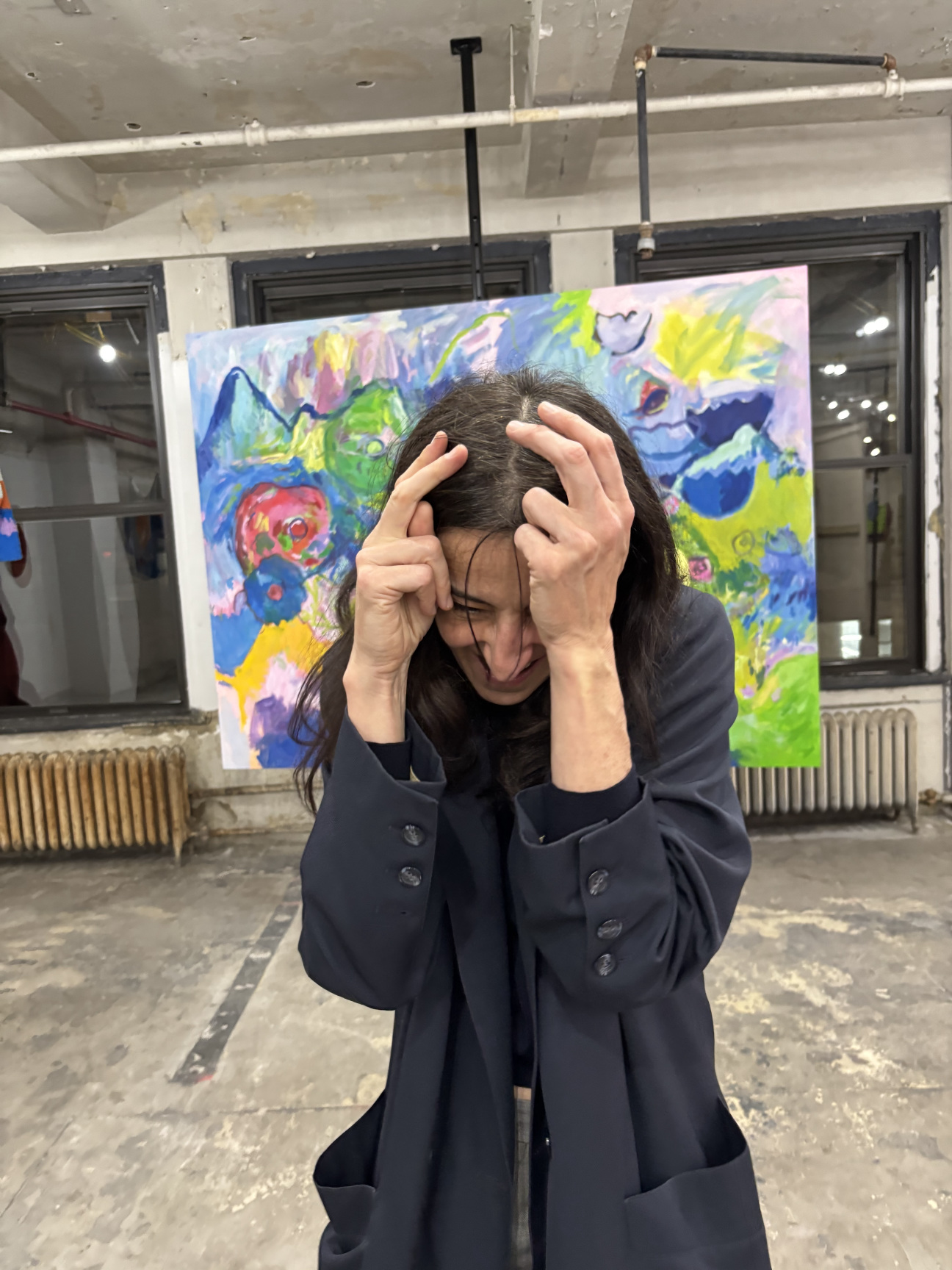
After the opening, I repaired with a couple Estonians to the nearby Distinguished Wakamba Cocktail Lounge, which hosted an informal afterparty. I like the place—I once had a birthday there—but like everything in New York it’s gotten too expensive. Plus, something always gnaws at me when I’m there. In the year 2000, an undercover cop shot and killed an unarmed Black man, Patrick Dorismond, in a confrontation initiated by the police outside the bar. They (wrongly) suspected Dorismond of selling drugs. I feel strange not for going to Wakamba 25 years later—I’m glad the bar is still around—but because I always want to mention the incident to whomever I’m with, and I’m never sure if I should.
Smack in the middle of the week, I had tickets to see Gillian Welch and David Rawlings. If you don’t know them, they write songs that sound as if they date to the 1930s but address topics like realizing that you’ve fallen out of love with the person sleeping on your shoulder on a car trip, resisting the urge to throw yourself off into a gorge, slutting around after breaking off an engagement, and the plight of the musician in an age when, per one song title, “everything is free.” The economy and precision of the duo make for heart-piercing work. They’ve absorbed the conviction of their Presbyterian source material: No matter how bad things are now, one day reward is coming. You just might have to die first.
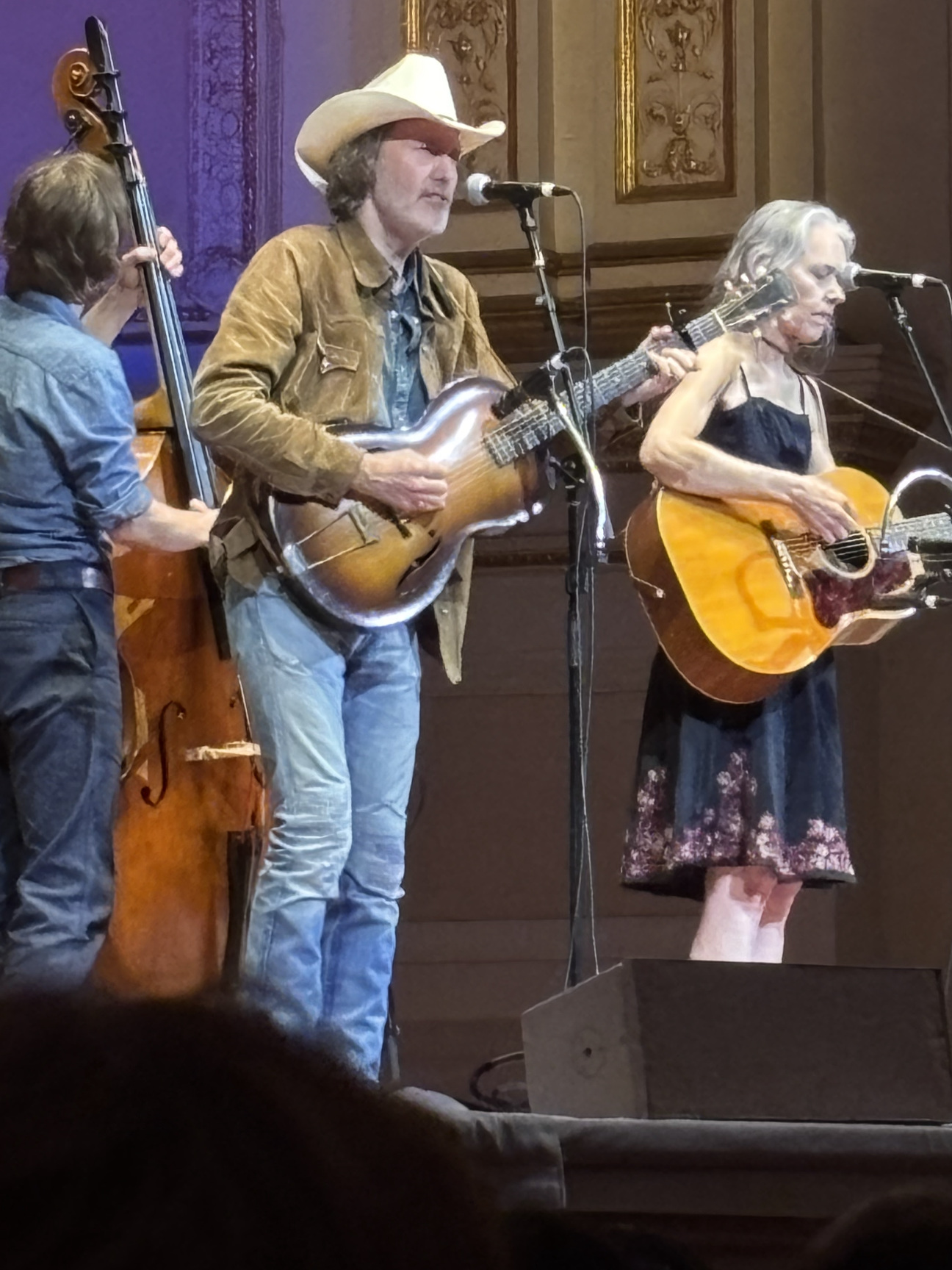
Americana is distinctly uncool in the art world, and I suspect it will remain so except among Midjourney marblecutters angling for all that retracted NEA cash to work on the National Garden of American Heroes. The people I informed that I was skipping openings to hear banjo tunes looked at me with absolute incomprehension. (Imagine trying to explain the concept of high lonesome to someone from, say, Zurich.) The performance took me out of the running for a couple shindigs I should have covered—one in celebration of Sanya Kantarovsky at an East Side piano bar (Okay sis!), another for Rosemarie Trockel, whose new shows were high risers in the chitchat markets. But Welch and Rawlings are national treasures, and they were performing at the acoustically pristine Carnegie Hall.
After two sets and two encores, I found myself waiting at the stage door for the band to emerge so I could get their autographs. It took the the length of two and a half cigarettes—smoked by my date, the brilliant and beautiful David Velasco, of whom you may have heard—for them to finally emerge. And when they did, it was an old friend of mine leading the way. We were both shocked; we hadn’t seen each other in a decade. She was related to Rawlings by marriage, or something. Thus, the band and I were actually introduced. I totally fucked up any hope of conversation, however, by stammering to Welch, “So, do you, like, read books?” She looked up sharply from the program in her hand, replied, “Yes,” and returned to dashing off a signature for her dumbest fan.
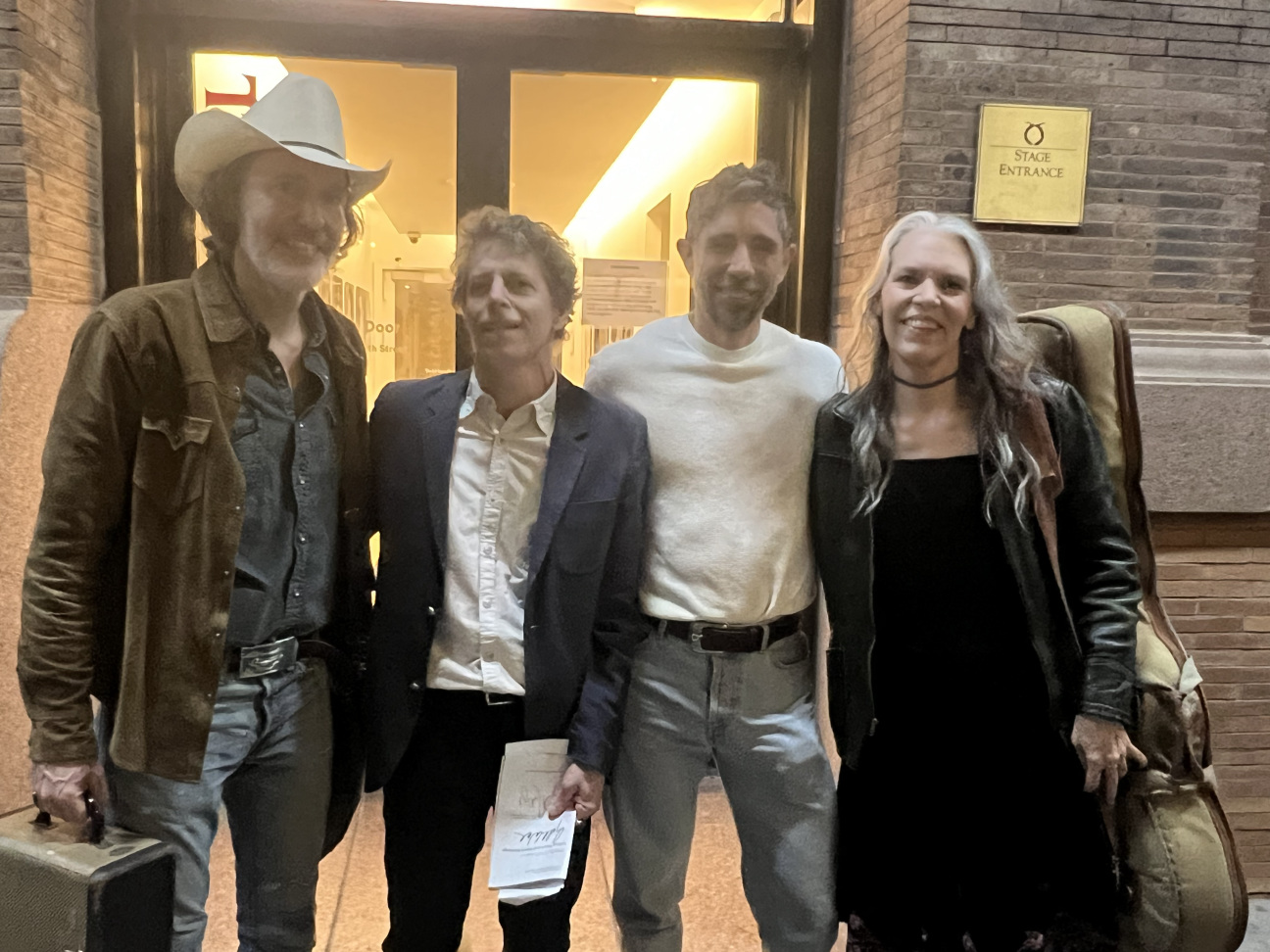
Having chosen so distinctly to be in the wrong place that night, I made sure to be in the right one on Thursday—a wedge-shaped split-level apartment in the West Village with a spiral staircase and a blood-red bedroom. The itinerant dealer Alyssa Davis was fêting artist Genevieve Goffman, whose work Davis is currently co-presenting at Foreign & Domestic gallery, with a late-night house party. It did not disappoint, with DJs, ample alcohol, and a rooftop terrace that I never managed to see. The crowd was large and friendly. I talked to numerous strangers and people I hadn’t seen in months. I misrecognized someone with a new moustache. The Estonians showed up and introduced me to a guy who makes proprietary point-of-sale software for art institutions, whose helpline was, unfortunately for him, his cell number.
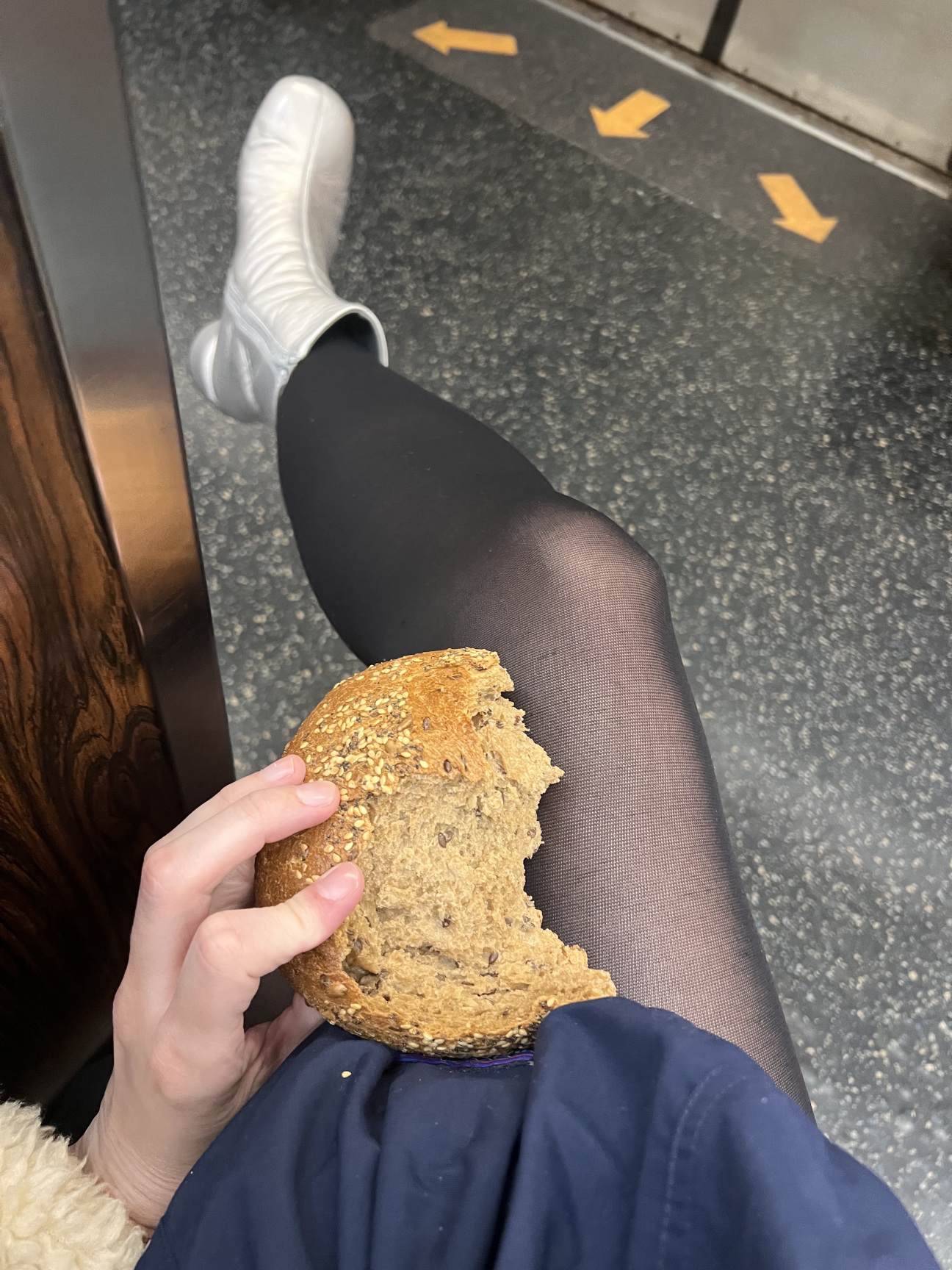
The music and talk became chaotically loud. A kid who looked dressed for a cruise-ship magic act wandered back and forth on some synthetic hallucinogen (my best guess), radiating paranoia. A woman in a sigil-bearing cloak lamented that her current exhibition was being shuttered a week early by a gallerist whom I concluded has severe borderline personality disorder, though I’m no MD. The party peaked with a rumble on the roof deck, between a group of Chicagoans—feeling themselves thanks to the whole pope thing, no doubt—and a lone woman who started punching and kicking one of them, apparently for disobeying protocols involving the equitable circulation of cocaine. This is what I pieced together from a few secondhand accounts, anyway, since I was downstairs guarding a bottle of tequila and talking about god knows what to god knows who. A tall blonde woman put half a loaf of bread in her bag. Recession indicator? When it was time to leave, I tromped down the spiral stairs to the blood-red room, bodies sprawled everywhere, the closet door a broken mirror. It was all a blast and no one seemed to have a care in the world.
[INSERT_AD]

